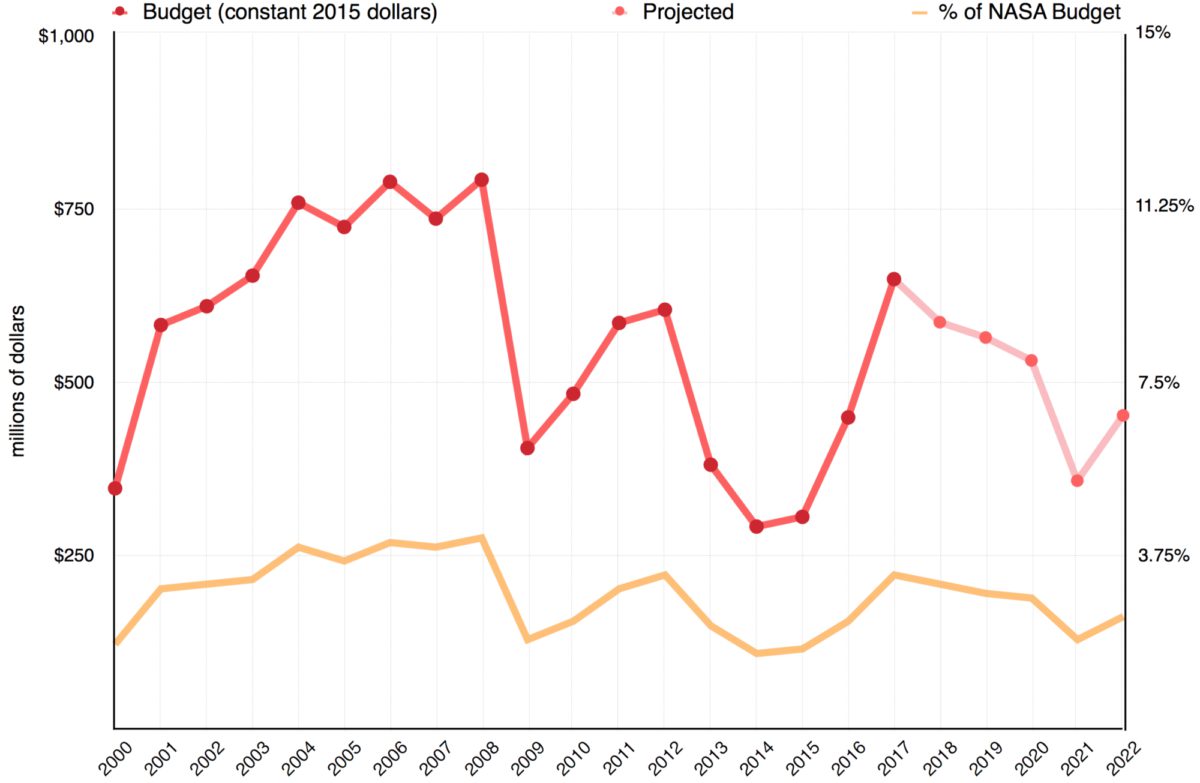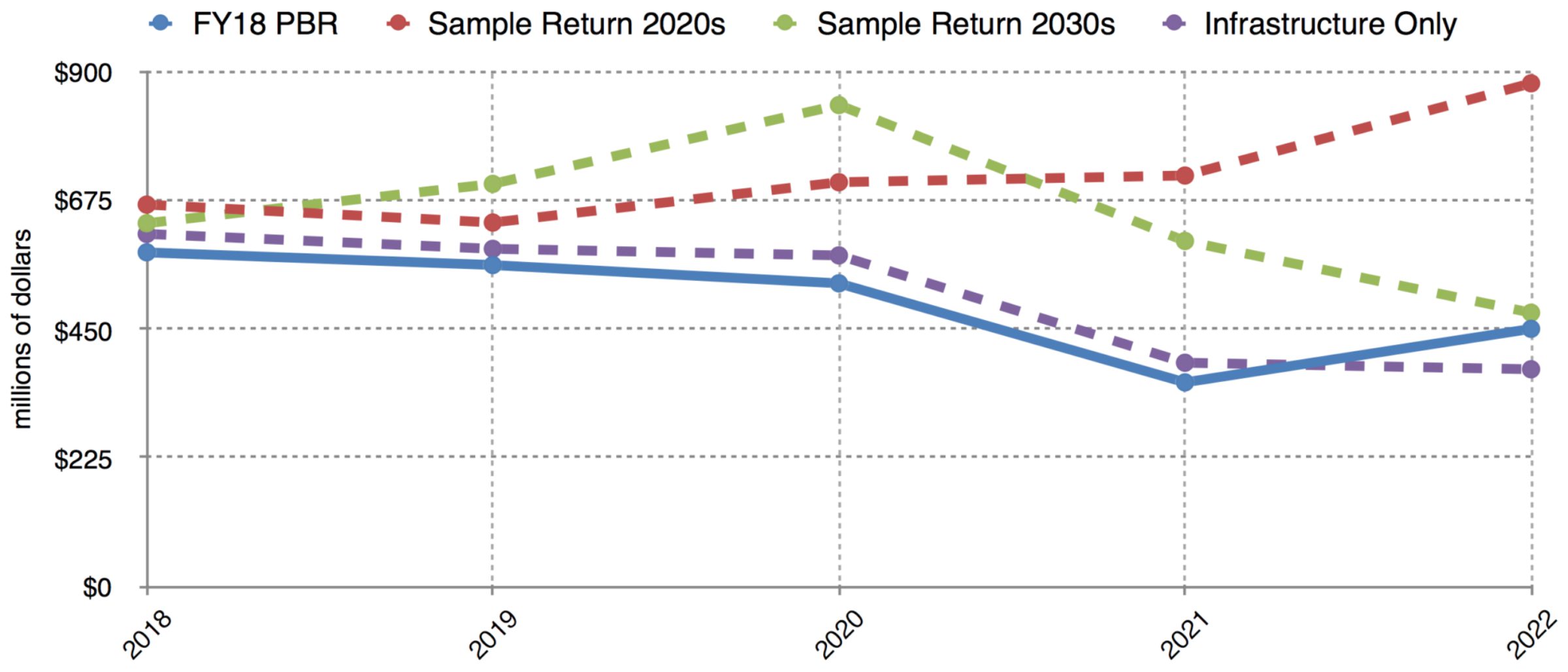Casey Dreier • Jun 06, 2017
Announcing a New Paper on NASA's Mars Exploration Program
NASA’s robotic Mars Exploration Program is on a troubling path of decline—and decisions must be made now in order to stop it.
This is the conclusion my colleague Jason Callahan and I reached as we prepared a new report for The Planetary Society: Mars in Retrograde: A Pathway to Restoring NASA’s Mars Exploration Program (pdf). I urge you to download it and read it yourself.
Since its formation in the year 2000, the Mars Exploration Program has systematically worked to understand the Red Planet through robotic missions of exploration. It realized a revolution in humanity’s knowledge of Mars, and methodically worked toward the top goal of Mars science—sample return to Earth—a goal which could advance our search for life and reveal untold secrets into Mars’ ancient past.
The robotic program also provided precious information to support human exploration, collecting radiation measurements, landing data, resource characterization, and surface mapping for future missions.
But we found a fundamental contradiction in NASA’s extant Mars plans: there is not much of a program within the Mars Exploration Program.
Currently, NASA has a single mission development—the Mars 2020 rover (InSight, which launches in 2018, is part of the Discovery program). There have been no new mission starts for Mars since 2013, one of the longest droughts in recent history.
But the existing Mars missions are aging and won’t last forever. A new orbiter is badly needed to relay high-speed communications with ground missions and to provide high resolution mapping of the surface to support landing attempts by NASA and others (not to mention provide important science). Yet the latest budget release for 2018 contained no new start for this critical mission.

Our report makes three recommendations for NASA:
We also provide straightforward budget analysis for three potential robotic Mars programs going forward: (1) Mars sample return in the 2020s, (2) sample return in the 2030s, and (3) an infrastructure-only program that indefinitely delays sample return and only provides a replacement a data relay communications orbiter. By analyzing the three options and comparing them to the current funding projections we conclude that NASA is currently pursuing option #3—infrastructure only. This is a significant change in priority for the Mars program at NASA and substantially different than the past two decades of NASA policy.

We must be honest about what’s happening: NASA claims it's on a Journey to Mars, yet it cannot immediately invest in even the most basic infrastructure at the Red Planet, much less commit to achieving the top scientific goals for a program it has spent the last twenty years building from the ground-up.
We are at a key decision point. Congress, the new Administration, and NASA must make a conscious choice about the future of the robotic Mars program. We must start a new orbiter mission now or risk missing the 2022 launch window. We must start working on a way to return the samples that will be prepared by the 2020 rover or allow them to waste away on the surface of Mars. We must ensure that human exploration missions have the data needed to safely land and produce resources to sustain our astronauts.
The Planetary Society will work to support Mars exploration. The report is the first step.
Let’s Go Beyond The Horizon
Every success in space exploration is the result of the community of space enthusiasts, like you, who believe it is important. You can help usher in the next great era of space exploration with your gift today.
Donate Today

 Explore Worlds
Explore Worlds Find Life
Find Life Defend Earth
Defend Earth

